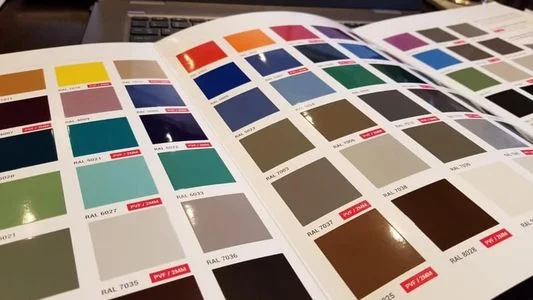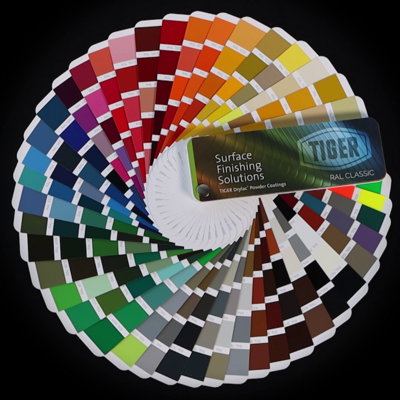The RAL Color System Explained: History, Functionality, and Applications in the Powder Coating Industry

RAL colors are a widely recognized standard for color communication and specification. Developed in Germany, it has become an essential tool for designers, manufacturers, and also powder coating professionals around the world. In this blog, we will delve into the history of the RAL Color System, explore how it works, and uncover its special applications in the powder coating industry.
The History of the RAL Color System
The RAL Color System originated in Germany in the early 1920s when the Reichs-Ausschuss für Lieferbedingungen und Gütesicherung (RAL), which translates to the National Commission for Delivery Terms and Quality Assurance, was established. Its primary goal was to standardize color references and facilitate color communication across various industries.
The RAL Color System was officially introduced in 1927 and gained widespread acceptance due to its reliability and consistency. In addition to color specification, the RAL Color System is nowadays also heavily used for effective color matching and identification. Professionals can use RAL color swatches or digital color tools to compare and select the closest RAL color match for a given sample or customer request.

How the RAL Color System Works
The RAL Color System is based on a standardized set of color samples, each identified by a unique RAL code. These codes consist of four digits in combination with the letters 'RAL' (e.g. RAL 9011). The first digit is a system code number (1: yellow, 2: orange, 3: red, 4: violet, 5: blue, 6: green, 7: grey, 8: brown and 9: white and black shades). The remaining 3 digits are chosen sequentially. The name of a color shade (e.g. ‘Graphite Black' for RAL 9011) is a description of a specific color, designed to help avoid any potential confusion in the creative process.
There are 3 primary RAL color collections:
- The RAL CLASSIC color collection began with 40 colors in 1927 and has grown to 216 colors from the entire color spectrum.
- The RAL DESIGN system plus was created in 1993 and defines 1,825 colors specifically for finely adjusted creative applications.
- The RAL EFFECT was introduced in 2007. This is a color range for innovative industrial and product design with 490 shades including metallics.
How are RAL Colors Defined?
RAL colors are defined using precise physical samples produced by the RAL organization. These samples are made using a specific formulation of pigments, binders, and other materials to ensure accuracy and reproducibility. The RAL Color System encompasses a wide range of hues, shades, and tones, offering a comprehensive palette for diverse applications. Ranging from Architecture and Product Design to Automotive OEM and Aftermarket and many more different industries!
How do you use RAL Colors with TIGER Drylac Colors & Finishes?
At TIGER we also rely on RAL-specifications and therefore offer a wide variety of related finishes and many more materials referencing the RAL-System. Check out our options:
TIGER Webshop
Visit our webshop to browse through TIGER Drylac stock products, including a huge selection of RAL colors!
Take your pick of these TIGER Tools!
TIGER RAL fan deck
TIGER Drylac offers a RAL color fan deck (with TIGER Drylac Product IDs) which customers can order from our website at >> Customer Color Card & Panel Order Form
TIGER RAL color card
Our RAL color card is one of TIGER’s most popular! You can download an electronic version from the Resources section of our website, or order from >> Customer Color Card & Panel Order Form
TIGER Match 2 Stick digital color scanner
The TIGER Drylac Match Stick 2 is a digital color scanner that connects to your phone through an app. Scan almost any object and Match Stick will identify the closest TIGER Drylac color. Available to purchase rightaway from our Webshop.
Talk to your TIGER Technical Sales Representative about each of these tools and how they can optimize results to help get the job done!!
Conclusion & Key Takeaways – RAL Color System
The RAL Color System has played a significant role in color communication and specification for decades, and its impact on the powder coating industry is undeniable. By providing a standardized reference, precise color formulation, and effective color matching, the RAL system ensures consistent and accurate color outcomes in powder coating applications. As the powder coating industry continues to evolve, the RAL Color System remains a trusted and indispensable tool for professionals seeking reliable and visually appealing finishes.
Back to overview
